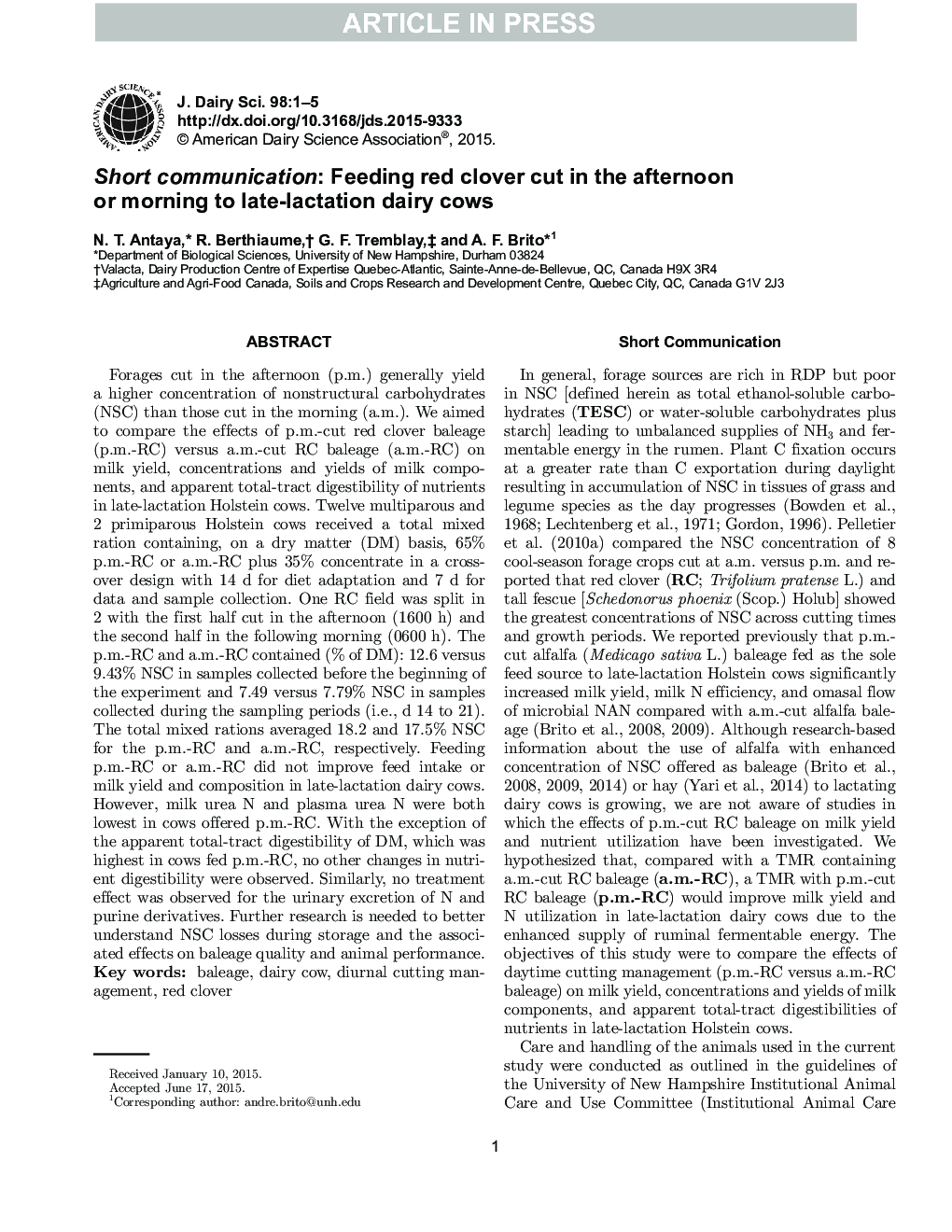| Article ID | Journal | Published Year | Pages | File Type |
|---|---|---|---|---|
| 10974961 | Journal of Dairy Science | 2015 | 5 Pages |
Abstract
Forages cut in the afternoon (p.m.) generally yield a higher concentration of nonstructural carbohydrates (NSC) than those cut in the morning (a.m.). We aimed to compare the effects of p.m.-cut red clover baleage (p.m.-RC) versus a.m.-cut RC baleage (a.m.-RC) on milk yield, concentrations and yields of milk components, and apparent total-tract digestibility of nutrients in late-lactation Holstein cows. Twelve multiparous and 2 primiparous Holstein cows received a total mixed ration containing, on a dry matter (DM) basis, 65% p.m.-RC or a.m.-RC plus 35% concentrate in a crossover design with 14 d for diet adaptation and 7 d for data and sample collection. One RC field was split in 2 with the first half cut in the afternoon (1600 h) and the second half in the following morning (0600 h). The p.m.-RC and a.m.-RC contained (% of DM): 12.6 versus 9.43% NSC in samples collected before the beginning of the experiment and 7.49 versus 7.79% NSC in samples collected during the sampling periods (i.e., d 14 to 21). The total mixed rations averaged 18.2 and 17.5% NSC for the p.m.-RC and a.m.-RC, respectively. Feeding p.m.-RC or a.m.-RC did not improve feed intake or milk yield and composition in late-lactation dairy cows. However, milk urea N and plasma urea N were both lowest in cows offered p.m.-RC. With the exception of the apparent total-tract digestibility of DM, which was highest in cows fed p.m.-RC, no other changes in nutrient digestibility were observed. Similarly, no treatment effect was observed for the urinary excretion of N and purine derivatives. Further research is needed to better understand NSC losses during storage and the associated effects on baleage quality and animal performance.
Keywords
Related Topics
Life Sciences
Agricultural and Biological Sciences
Animal Science and Zoology
Authors
N.T. Antaya, R. Berthiaume, G.F. Tremblay, A.F. Brito,
